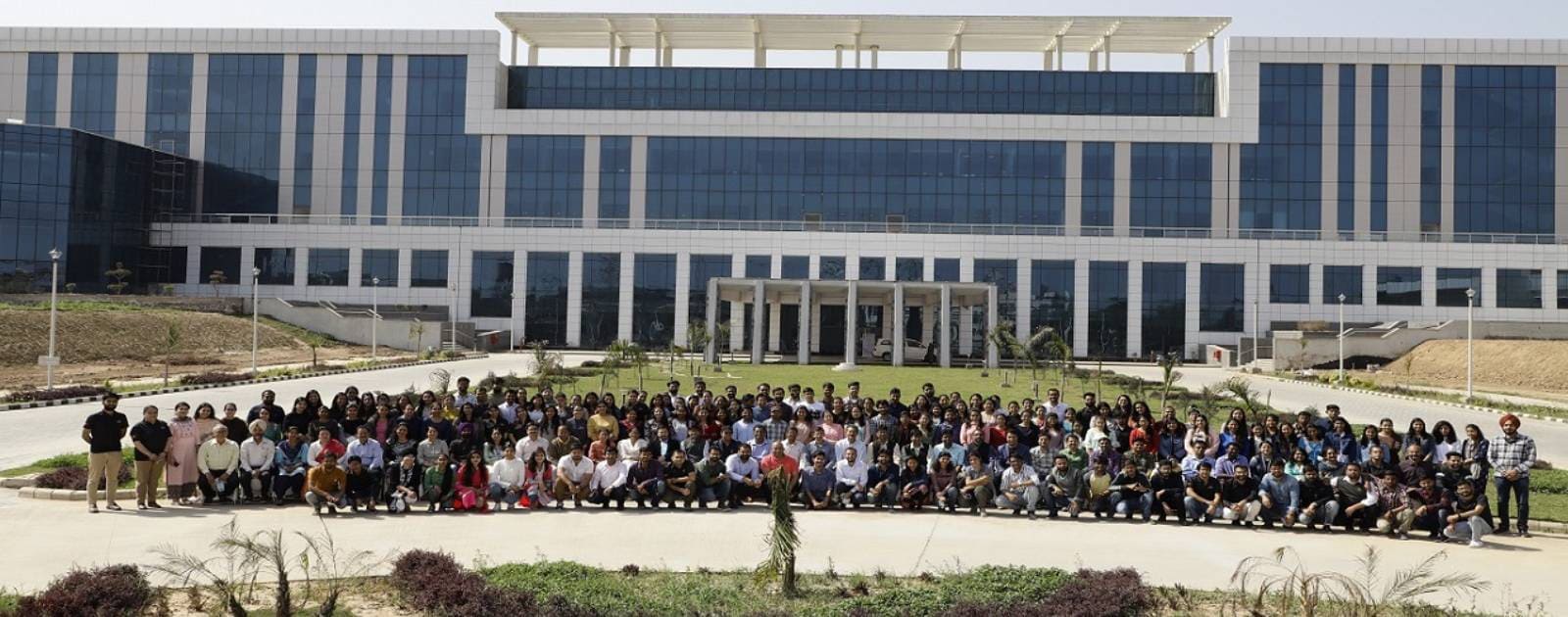About Us
Institute of Nano Science and Technology (INST), Mohali (Punjab), an autonomous institution of the Department of Science and Technology (DST), Government of India, has been established under the umbrella of NANO MISSION, initiated by DST to boost research and development in the field of Nanoscience and Nanotechnology in India. INST started its activities on 3rd January 2013 from its transit campus at Mohali, Punjab. In the December of 2020, the institute shifted to its state-of-the-art new campus sprawling over 35 acres of land, at Knowledge City, Sector-81 (Mohali, Punjab). Research activities at INST encompass physics, chemistry, biology, and interdisciplinary sciences addressing problems in the field of energy, environment, quantum materials, nano-devices, and chemical biology.
INST brings together biologists, chemists, physicists, materials scientists and engineers having interest in nanoscience and technology. INST scientists, having strengths in basic science together with more application oriented mind from different backgrounds, work together by joining hands as a cohesive unit, under a congenial work environment, on a common platform apart from carrying out their individual research. The aim is to generate processes, technologies and devices directed towards national priorities especially in sectors like Agriculture, defence, healthcare, energy, environment and water. INST encourages outstanding research resulting in publications in the best internationally acclaimed journals , develop processes for strategic materials for indigenous production (import substitution), generate devices and advanced technology for defence and for commercialisation and also develop low-cost affordable devices especially in healthcare for the socially deprived section of our society.
INST is also promoting science and inculcating the practice to develop technology in India amongst the young generation of the nation through its Outreach program especially for rural, remote and under-served schools by delivering talks in order to scrape out the hidden gems which when polished may light up the natural and international scientific sky.
Through its various activity INST is committed to contribute significantly to the National Societal Programmes like Swachh Bharat Abhiyan, Swasth Bharat, Smart Cities, Smart Villages, supporting the Strategic Sector, Make in India and Clean & Renewable Energy through scientific means and by making use of technologies to address requirements of these program.

What is Nanotechnology?
Nanotechnology is science, engineering, and technology conducted at the nanoscale, which is about 1 to 100 nanometers.
Nanoscience and nanotechnology are the study and application of extremely small things and can be used across all the other science fields, such as chemistry, biology, physics, materials science, and engineering. The ideas and concepts behind nanoscience and nanotechnology started with a talk entitled “There’s Plenty of Room at the Bottom” by physicist Richard Feynman at an American Physical Society meeting at the California Institute of Technology (CalTech) on December 29, 1959, long before the term nanotechnology was used. In his talk, Feynman described a process in which scientists would be able to manipulate and control individual atoms and molecules. Over a decade later, in his explorations of ultraprecision machining, Professor Norio Taniguchi coined the term nanotechnology. It wasn't until 1981, with the development of the scanning tunneling microscope that could "see" individual atoms, that modern nanotechnology began.
Today's scientists and engineers are finding a wide variety of ways to deliberately make materials at the nanoscale to take advantage of their enhanced properties such as higher strength, lighter weight, increased control of light spectrum, and greater chemical reactivity than their larger-scale counterparts. Nanoscale particles are not new in either nature or science. However, the recent leaps in areas such as microscopy have given scientists new tools to understand and take advantage of phenomena that occur naturally when matter is organized at the nanoscale. In essence, these phenomena are based on “quantum effects“ and other simple physical effects such as expanded surface area. In addition, the fact that a majority of biological processes occur at the nanoscale gives scientists models and templates to imagine and construct new processes that can enhance their work in medicine, imaging, computing, printing, chemical catalysis, materials synthesis, and many other fields. Nanotechnology is not simply working at ever smaller dimensions; rather, working at the nanoscale enables scientists to utilize the unique physical, chemical, mechanical, and optical properties of materials that naturally occur at that scale.